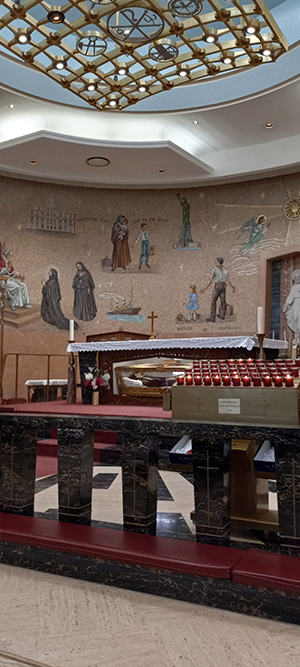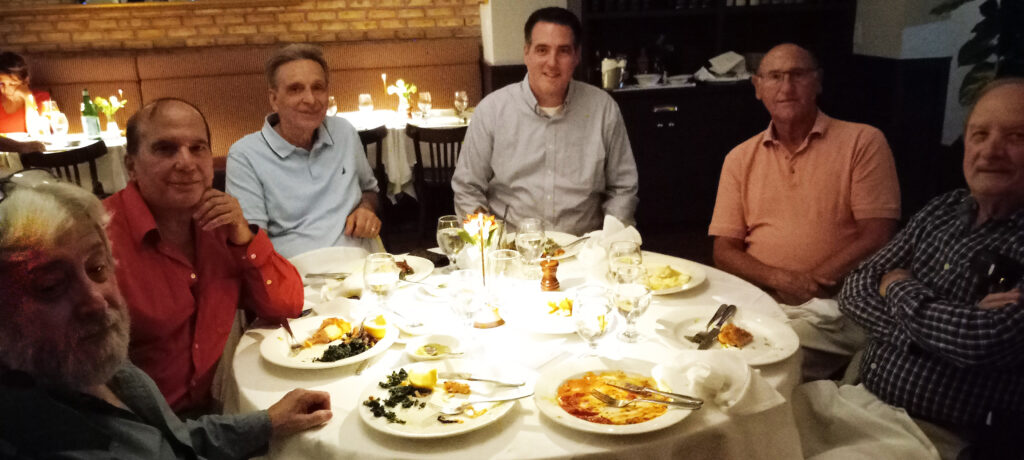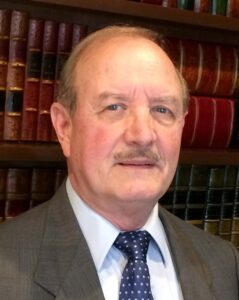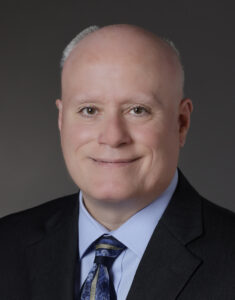
Despite its big-city issues (traffic, high prices, occasional violent crime), New York, aka the Big Apple, remains one of the world’s greatest cities. I was reminded of this when I took a short, four-day trip there last month. Though I’d been to New York many times before, I had, as per usual, discovered new things underneath the skin of the apple.
Naturally, my focus was on italianità, as the East Coast states of New York and New Jersey did comprise a sizeable percentage of Italian immigrants during the great migration of 1880-1920. (Although, ironically, the American state which still has the largest number of Italian Americans, statistically on average, is Rhode Island, closer to Boston than the City that Never Sleeps.)
This time around, I was lucky to have two wonderful tour guides on my first day: IIA member Tony Vecchione and his wife Joette. The Vecchiones live in New Jersey, which is where I stayed during my trip (to combat those high NY hotel prices).
Given the 2024 film Cabrini, one highlight was a Sunday visit to the Mother Cabrini Shrine located in the Washington Heights neighborhood, overlooking the Hudson River. It is a fitting resting place for the frail, yet determined, little nun from Codogno, Italy, a one-woman social justice juggernaut whose work with the poor elevated her to canonization in 1946 as the first American saint in the Catholic Church.
The simple building, connected to the former Cabrini High School (now a charter one), features small exhibit rooms detailing her life. Cabrini’s body is on display beneath an altar in the chapel itself, her hands and face made of wax. The walls surrounding the chapel, made from Carrara marble, feature visual highlights from her career, including Pope Leo XIII blessing her mission.

A day later, I took a New Jersey commuter train from nearby Ridgewood, NJ to Hoboken, then transferred to a PATH train which dropped me off at Christopher Street in Greenwich Village. Long considered America’s first “Little Bohemia,” akin to France’s Left Bank, the Village has long had a very strong Italian presence, perhaps even on par with nearby Mulberry Street.
The anarchists, radicals, free-thinkers, and poets of the early 20th-century—like the beatniks, gays, college students and African Americans who followed them in the 1950s—found Greenwich Village an accommodating place. This was largely thanks to the many Italian shopkeepers and cafe owners whose “live and let live” attitude allowed these social dissidents to flourish.
Indeed, the many Italian coffee shops in the area became the official hang-outs for such citizens. Among them were Caffe Dante (established in 1915), the San Remo (no longer standing, but marked with a plaque) and Caffe Reggio (the first place to serve cappuccino in America, 1927).
Many businesses in the Village still have Italian names. The huge St. Anthony of Padua church remains open. Tiro a Segno, an Italian rifle club founded in 1888 and one of the oldest Italian social clubs in America, is housed in an elegant Italianate building.
In short: It took an Italian village to raise the Village!
Nearby Mulberry Street, however, has befallen the same fate as many so-called “Little Italys” in America: commercialization. This time I visited the fabled San Gennaro festival, held every September in honor of the Neapolitan saint. I went during the day, more than a little appalled by images of wall-to-wall crowds during the evening. It was still fairly crowded, though you could walk around comfortably. It was well-organized, and the booths were populated by people who obviously love keeping the tradition alive. But those NY prices now include the food items. Very overpriced.
Also: Crude rap music blasting from loudspeakers? A booth selling arancini with a huge sign above proclaiming, “I got balls”? At a religious festa?
On my way out of Mulberry Street, I was pleased to see a spectacularly huge mural on a building of Jannik Sinner, recently crowned the men’s tennis champion at the US Open tournament held in Queens, NY. Don’t let the last name fool you: Sinner is from Alto Adige, the bi-cultural region where Italian and German peacefully co-exist. Though he does speak German, Sinner is also the spokesman for Lavazza coffee and a very proud Italian. Bravo!
My final visit was to the new World Trade Center building, which also boasts a reflecting waterfall monument and list of victims’ names. It is altogether fitting and proper that, twenty-three years after 9-11, this site still brings usually chatty tourists to silence (as well it should). Even non-Italians would be hard-pressed to ignore the cascade of Italian American surnames featured among the 3,000 of that terrorist attack, including many first responders.
Would Tony Soprano, our “official” media representative (and a fictional one at that!), have rushed into those buildings the way Fire Chief Peter Ganci did?

Andrew Ricci, George Ricci, John Mancini
This is a question for all mob-movie lovers to ponder. The media has turned our thugs into heroes and our heroes into nobodies. Peter Ganci who?
Speaking of heroes, the last day of my trip featured a dinner with IIA colleagues at Osteria del Bianco, located a stone’s throw away from the New York Public Library (where the lions sculpted by the famous Piccirilli brothers still welcome visitors). The food was predictably fine. So were the wit and wisdom on display, which flowed as freely as the wine. It was a fitting end to a trip which ended much too quickly—in a New York minute, as the old saying goes. -BDC




Had a similar experience earlier this year in NYC, with some free time available, I finally got to visit the Morgan Library…..what an amazing place, the library collection along with the art work, much of it from the Renaissance blew me away……the collection was priceless and 19th century library vaults were stunning. Been to the city many times but for some reason never got to the Morgan…..and even while there, no large crowds, perhaps the term Library puts people off, but the entire structure was a pure fantasy, I guess befitting Mr. Morgan….
It was long overdo to dine with some formidable minds and protectors of the Italic heritage. I thoroughly enjoyed sharing our personal histories both professional and Italian values based.
Bill, to underscore how large Little Italy once was and its influence on Greenwich Village as well, I would draw your attention to the 1954 Gian-Carlo Menotti opera, “The Saint of Bleeker Street”, a segment was featured on the Ed Sullivan Show.
Didn’t know about the Morgan Library nor that Gian-Carlo Menotti work. Mille grazie!
Rhode Island used to have the largest percentage of Italian Americans. But according to the latest census it has been surpassed by Connecticut. Here are the top 10:
1. Connecticut 16.11%
2. Rhode Island 15.44%
3. New Jersey 14.52%
4. New York 11.97%
5. Massachusetts 11.62%
6. Pennsylvania 10.97%
7. New Hampshire 9.71%
8. Delaware 8.08%
9. Vermont 7.02%
10. Ohio 6.01%
Thanks! Do you have a link to the latest (2020) census? I couldn’t find one.
I did just find the link below to this site, which reiterates your statistics.
https://worldpopulationreview.com/state-rankings/italian-population-by-state
Not a math major but still trying to figure out the difference between “actual number of Italian Americans” vs. “percentage of Italian Americans vs. the population total of a state.” A bit confusing (at least to me). I live in Illinois,
for example, yet a state like New Hampshire has “more” Italians than we do?
Not in terms of actual numbers.